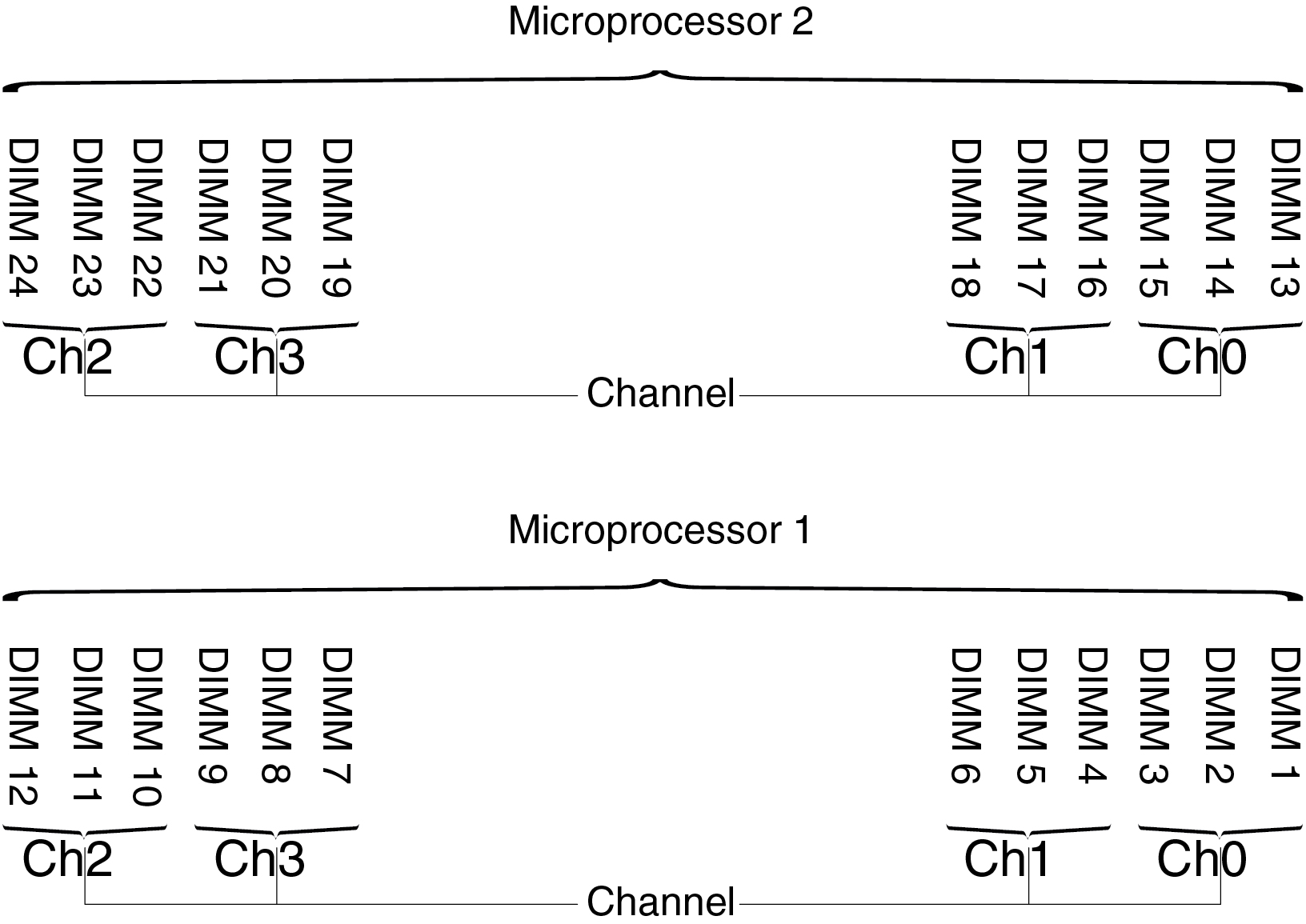Memory mirrored channel
Memory mirrored channel mode replicates and stores data on two pairs of DIMMs within two channels simultaneously. If a failure occurs, the memory controller switches from the primary pair of memory DIMMs to the backup pair of DIMMs.
You can enable memory mirrored in the Setup utility (see Starting the Setup utility).
When you use the memory mirrored channel feature, consider the following information:
- When you use memory mirrored channel, you must install a pair of DIMMs at a time. The two DIMMs in each pair must be identical in size, type, and rank (single, dual, or quad), and organization, but not in speed. The channels run at the speed of the slowest DIMM in any of the channels.
- The maximum available memory is reduced to half of the installed memory when memory mirrored is enabled. For example, if you install 64 GB of memory using RDIMMs, only 32 GB of addressable memory is available when you use memory mirrored channel.
The following diagram lists the DIMM connectors on each memory channel.
Figure 1. Connectors on each memory channel


Note
You can install DIMMs for microprocessor 2 as soon as you install microprocessor 2; you do not have to wait until all of the DIMM connectors for microprocessor 1 are filled.
The following table shows the installation sequence for memory mirrored mode:
| Number of DIMMs | Number of installed microprocessor | DIMM connector |
|---|---|---|
| First pair of DIMMs | 1 | 1, 4 |
| Second pair of DIMMs | 1 | 9, 12 |
| Third pair of DIMMs | 1 | 2, 5 |
| Fourth pair of DIMMs | 1 | 8, 11 |
| Fifth pair of DIMMs | 1 | 7, 10 |
| Sixth pair of DIMMs | 1 | 3, 6 |
| Seventh pair of DIMMs | 2 | 13, 16 |
| Eighth pair of DIMMs | 2 | 21, 24 |
| Ninth pair of DIMMs | 2 | 14, 17 |
| Tenth pair of DIMMs | 2 | 20, 23 |
| Eleventh pair of DIMMs | 2 | 19, 22 |
| Twelfth pair of DIMMs | 2 | 15, 18 |
Note DIMM connectors 3, 6, 7, 10, 15, 18, 19, and 22 are not used in memory mirrored mode when UDIMMs are installed in the server. | ||
When you install or remove DIMMs, the server configuration information changes. When you restart the server, the system displays a message that indicates that the memory configuration has changed.
Give documentation feedback